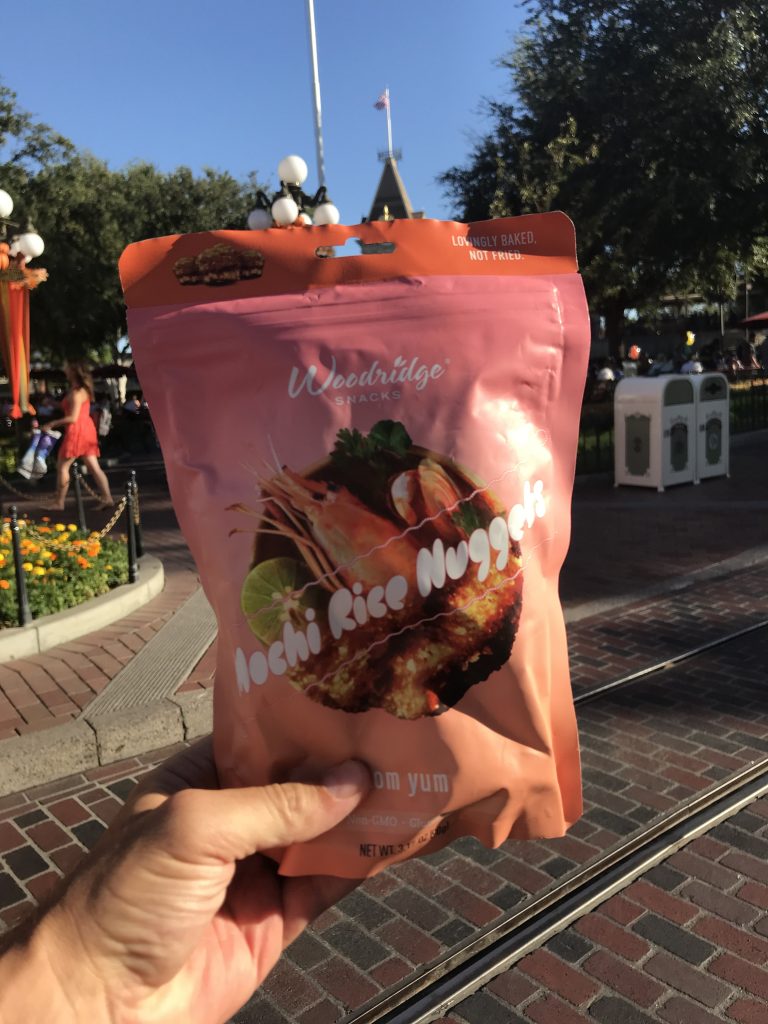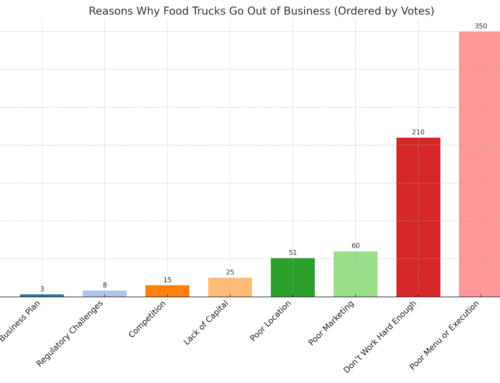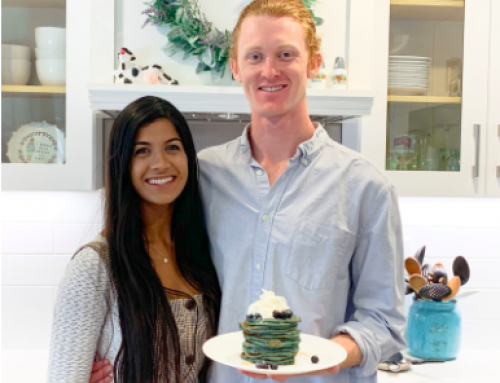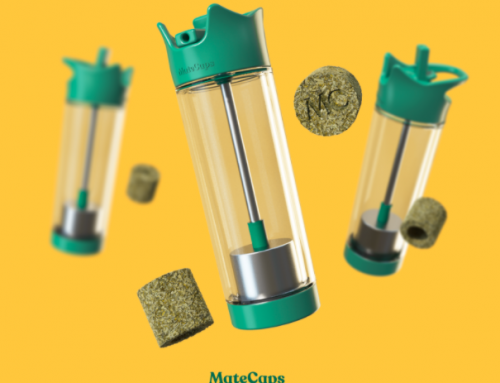Hello! Who are you and what food business did you start?
I’m Henry Chen, Founder and CEO of SPI West Port, which owns and sells the ALO Drink, ALO Snacks, and Woodridge Snacks brand of beverages and snack products.
Our company launched our food and beverage business in the U.S. about 12 years ago, with our flagship product line, ALO Drink. Today, ALO Drink is the #1 ready-to-drink aloe vera beverage brand in the U.S. grocery channel, and it can be found in grocery stores, convenience stores, mass retailers, specialty retailers, club stores, and food service establishments throughout the country.

Our retail customers include Kroger, Safeway, Publix, Whole Foods, Sprouts, Costco, Rite Aid, CVS, just to name a few. In all, we can be found in over 50,000 points of distribution across the U.S., and in over 40 countries around the world.
Leveraging the brand equity we built up over the years, we recently launched ALO Snacks, the world’s first dried aloe vera & dried fruits snack line. We also just introduced Woodridge Snacks to the U.S. market, our line of globally inspired snack products that brings exotic flavors from across the world to American consumers.
What are your ballpark monthly or annual revenue numbers?
We have grown our top line revenues for ALO Drink to tens of millions of dollars a year. We move more than 2.5 million cases of ALO per year, and counting.
What’s your backstory and how did you come up with the idea?
Long before ALO Drink, we started as distributors of American food and confection products in China, Taiwan, and Hong Kong. We started by obtaining the rights to Jelly Belly candies for greater China in the 1990s, and introduced this American favorite to the Chinese consumers.
Over the ensuing few years, we expanded our distribution of American snack and food products in Asia by obtaining the exclusive distribution rights to other popular brands including Snyder’s of Hanover pretzels, Pepperidge Farm cookies, Blue Diamond almonds, Campfire marshmallows, Mauna Loa & Hawaiian Host macadamia nuts and confection, Kettle Chips, among many other popular American consumer packaged foods brands.
Related Reading: How I Started a $75k/month Vegan Cookie Business with My Mom
In the course of building up our distribution business, while strolling up and down the grocery store and convenience store aisles in Asia, we noticed all sorts of interesting and unique snack and beverage products that could not be found the states.
Snacks like fried fish skins, dried sour plums, preserved duck tongue, were all over greater China, as were, on the beverage side, vinegar water, boba drinks containing tapioca, asparagus juice, and the like.
One category caught our attention…aloe vera drinks. We liked the concept and got in touch with a Korean supplier of this type of drink. So we then decided to not just export products from the U.S. to Greater China, but also to go the other way. We started importing a brand of Korean aloe vera beverages and launched them into the U.S. ethnic channels nearly twenty years ago.

Over the following few years, we gained more and more success in primarily the Asian and Hispanic channels, ultimately selling hundreds of truckloads a year. It was then that we determined it was time to introduce this product category to the mainstream American market.
After doing some research, it was clear to us that the best way to penetrate the mainstream market was to launch in the natural channels. Consumers that shopped in the natural channel, consisting of retailers such as Whole Foods Markets, Sprouts, Sunflower Market, were more likely to accept new and innovative products.
Natural channel retailers had fewer barriers to entry, with lower slotting fees and a higher chance for new innovations to attain listings. But it would take a much different product to penetrate this channel–we had to build a better product.
We decided that we would launch our own brand of premium, all natural aloe vera beverages to enter the natural channel. No one else was doing a premium line of aloe vera based drinks. We would use real fruit juice (instead of artificial flavors), real cane sugar (instead of high fructose corn syrup), real aloe vera pulp and juice straight from the leaf (instead of reconstituting from powder likely virtually all other aloe vera beverage brands), and only all natural, non-GMO ingredients.
We would use the highest amount of real aloe vera among the ready-to-drink aloe vera beverage competitors. Instead of ubiquitous, single flavor drinks, we would come up with unique flavor combinations for all our varieties, such as mango & mangosteen, watermelon & peach, and even wheatgrass.
We would invest in a proprietary, 2-stage bottling process that would allow for the largest pieces of real aloe vera pulp in our drinks. To attract and speak to the younger, influential, ‘innovator’ consumers, we would promote the brand with unique marketing campaigns (such as including free music called ALOtones composed and performed by electronic music artist Mikronesia for each flavor that consumers could download by scanning a branded QR code on every bottle).
We would brand our products in a unique and interesting way so that each flavor would have its own personality called out by its own distinct name. So our original flavor, for example, would be named ALO Exposed; our wheatgrass variety, ALO Awaken; our mango & mangosteen blend, ALO Allure; our watermelon & peach flavor, ALO Comfort, and so on.
Through various shows that we participated in as distributors of American snack and confection brands, we were able to find co-packer partners to help us bottle our drinks both in Taiwan and Thailand.
About twelve years ago, we brought in our first shipment of ALO Drink. Six truckloads of products sitting in our warehouse in South San Francisco waiting for customers! Multiple shows, trips to meet with brokers, meetings with retailers later and we were off to the races.
We were able to penetrate the natural channel, becoming the best selling aloe vera beverage in Whole Foods market.
Our success in this channel quickly caught the attention of conventional grocery buyers, who were seeing huge drop off in soda sales as their consumers were starting to clamor for better-for-you alternatives.
We rode the trend as other channels, including drug, club, and even convenience store, also saw the writing on the wall—consumers were looking better-for-you drink, functional drink alternatives to sodas and high sugary beverages, but they would still not compromise on taste.
Our drink was the perfect fit. And it has been a thrilling uphill ride ever since.
Take us through the process of developing and producing your aloe vera drinks.
We decided early on that we were going to be different from other competing RTD aloe vera brands. From the onset, it was critical for us to determine who we wanted to be.
As we weren’t manufacturers ourselves, we knew we couldn’t compete against the cheap, commodity type drinks in the market. We also knew that the low margin, $0.99 cent channel was not where we’d have any advantage and not where we wanted to be.
We saw a void in the mainstream market for premium, plant-based beverages so we decided to develop a premium, aloe vera based beverage line.
After we nailed down our target channel and brand positioning, it was time to get to work on the beverage itself. Based on such positioning, we came up with a set of criteria that we wanted our line to adhere to. It had to be all natural and use only non-GMO ingredients. It had to contain real fruit juice, not just flavors. It had to have nothing artificial. It had to use the best and contain the most real aloe vera pulp and juice compared to all other aloe vera beverage brands.
With these conditions, we worked with formulators to make hand samples of unique flavor varieties. We studied the market to look at flavor trends popular with the innovator set of consumers.
We decided to come up with flavors that others did not have, to further differentiate our brand. We added honey to our original flavor, ALO Exposed. Wheatgrass was a hit back then among the active health conscious crowd, so we developed ALO Awaken which contains a shot of real wheatgrass juice in every 16.9oz bottle.
We combined the exotic tropical fruit mangosteen with the more familiar mango in our ALO Allure blend. Not all flavors worked…for example, ALO Elated, our blend aloe vera and tea brewed from olive tree leaves, didn’t prove as popular. But nonetheless, we made sure that we had flavors that were distinctive and delicious.
Describe the process of launching ALO Drink.
Foremost, finding the opportunity and developing a brand sets the groundwork. It involves gauging and studying the market to identify voids and thereby opportunities; developing and positioning the brand in line with the target consumers of the market void; then creating a product line with the attributes aligned with the brand positioning.
Don’t overlook finding the right talent to design the brand identity. We’ve learned early on that the CPG business rarely gives a brand a second chance to re-position itself once you’ve already launched in the market.
Finding the resources to launch the business is a whole other side of the game. Developing models to figure out how much working capital is needed is critical.
Calculating working capital needs for holding inventory (considering how many months of inventory you need, minimum order quantities your supplier requires), for carrying accounts receivable (customers never pay on time!), and paying vendors is a necessary evil that manifests itself through nights after late nights of pouring over spreadsheet and crunching numbers.
Luckily, we had our other business, the distribution business, to help finance the launch of ALO Drink. Before ALO, we looked to friends and families for business capital.
As our business got off the ground, we were able to secure a working capital credit line with a bank. We never borrow too much…just enough for regular working capital needs. We find it more prudent to finance R&D/new product innovations with retained or additional equity instead of saddling up our firm with riskier debt.
Since launch, what has worked to attract and retain customers?
Coming up with new and innovative flavors, speaking to our target consumers with relevant, distinctive and memorable campaigns, sampling our products in stores and events to engage consumers personally, and consistently promoting our product at retail have all contributed to our success in attracting and retaining customers.
Social media and online campaigns have been the main outlets we use to engage consumers. Since we’re still an emerging brand, online campaigns are the most effective for us based on our more limited budget compared to the big brands.
We work with a creative agency and dedicated social media agency to ensure consistency in messaging in all our touchpoints with consumers.
We come up with unique campaigns to try to stand out. For example, as previously mentioned, early on we launched our ALOtones campaign. We hired Philadelphia based musician Mikronesia to compose and perform music for our line.
To emphasize uniqueness of each of our flavor, he created a dedicated piece of music for each flavor to call out its unique personality and give life to the brand. A branded ALOtones QR code was printed on each bottle, allowing the consumer to download the free ALOtone.
Scanning the QR code would bring the consumer to our mobile website where they could unlock and download the music. The next year, we brought this campaign forward even more with our Artist Experiment.
We hired two up and coming New York based artists, Sarah Blake and Peter Hamlin, to drink our drinks, listen to their ALOtones, and create beautiful artwork inspired by them. These pre-roll videos can be found at https://alodrink.com/alotones/.
Recently, continuing with our connection to music, we launched our “Make Your Body Sing” campaign, where we invited talented dancers from all over to try and be inspired by ALO drink and dance to ALOtones in exotic places around the globe.
These campaigns and our positioning, along with our unique flavors and brand identity, have allowed us to step further apart from our competitors, and have given life to our brand.
How are you doing today and what does the future look like?
We continue to be the #1 ready-to-drink aloe vera beverage in U.S. grocery channel. After launching in the natural channel, we were able to gain momentum and expand into conventional grocery, drug, mass, and club.
Recently, we’ve made significant inroads into the convenience store channel as well and are seeing huge success there. In fact, convenience is our fastest growing channel. We’ve also found great success in the food service channels, particularly in corporate tech campuses.
We can be found in just about all the major tech company campuses, including at Google, Facebook, Apple, Uber, Sony Playstation, Lucas Arts, Twitter, and many others. Our drinks truly resonate with the tech and millennial crowd! In the U.S., we can now be found in over 50,000 points of distribution, and more and more each day.
Related Reading: How We Started a $10 Million Dollar Spice and Seasoning Business
The future looks bright as we’re always coming up with new flavors as we evaluate and replace underperforming ones.
As the ALO Drink brand continued to grow, we looked at various ways to expand the business. Since oftentimes expanding flavors only works to cannibalize your own sales, we determined that the best way for us to further grow our business was to get into another part of the store while at the same time leveraging the sales and distribution network we’ve already created over the years.
So, we recently launched ALO Snacks, the world’s first line of real dried aloe vera and dried fruits. We’re also proud to introduce a brand new line of snacks under the “Woodridge Snacks” brand, which will bring flavors from around the world to American consumers via various unique snack lines including Tempura Seaweed Chips, Mochi Rice Nuggets, Ginger Chews, and vacuum-fried Crunchy Fruit Chips. Each line contains a variety of globally inspired flavors.
Advice for other food entrepreneurs who want to get started or are just starting out?
Determine your brand positioning and target consumers, then do your market research to determine what retail price point your product must sell at to be attractive and attainable.
Start with the right price point and work backwards from there to determine what your costs need to be. Squeeze out costs until you achieve the retail price target but at the same time, don’t compromise on product quality.
If you can’t get there based on your quality requirements and retail price point, keep working at it. You don’t want to throw a lot of money into a new venture only to find that consumers can’t afford your product, no matter how good it tastes!
Learn More.
- Brand Websites: www.alodrink.com, www.woodrigesnacks.com, www.alosnacks.com




